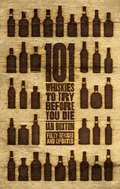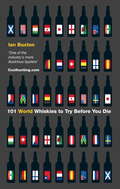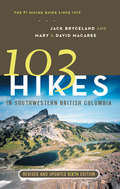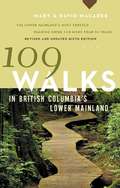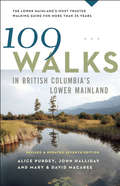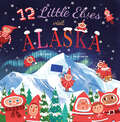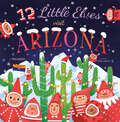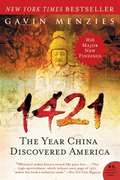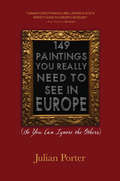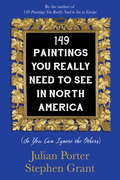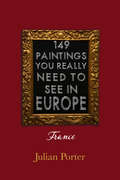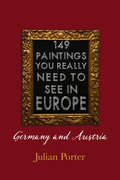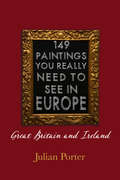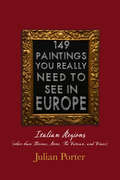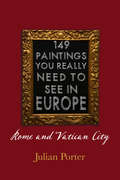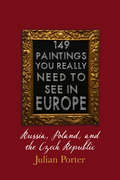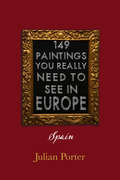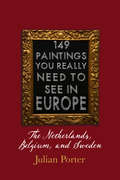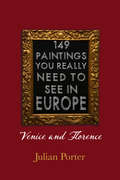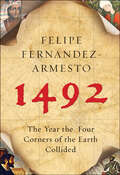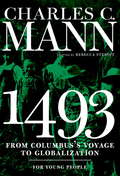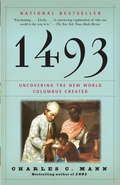- Table View
- List View
101 Things You Didn't Know About Ann Arbor, Michigan (But Are About To Find Out)
by Horace WoodhouseAfter you've browsed through this little book, you will better understand why Ann Arbor has a greater quirk quotient than most places. To prove his point, your curious author has dug up bits of esoterica - odd, amusing, and little-known strands that make up the city's variegated fabric. Sure, you live here, but how much do you really know about Ann Arbor? Can you name your hometown football legends, Playboy Magazine playmates, 1960s radicals, NASA astronauts, the local boxer who fought Jack Dempsey, the brainy UM graduate who attempted the perfect crime, or the local girl who flirted with Humphrey Bogart in "The Big Sleep"? Who was the native industrialist who helped build the Panama Canal? Or the Ann Arborite who created the world's largest technology company? How did a border dispute lead to the greatest rivalry in college football? Where is the city's only Frank Lloyd Wright-designed house? What is Ann Arbor's connection a Presidential assassination? Readers learn the answers to these intriguing questions and much, much more. Fascinating tangents and tidbits in purposely random sequence (with generous cross-references) create a ready-to-explore trail of knowledge about Ann Arbor and its environs, informing and entertaining, correcting myths and misconceptions, mostly revealing an unexpected treasure trove that brings a culture and a place into sharp focus.
101 Things to Do in Cleveland
by Gary J. SikorskiWelcome to Cleveland, on America&’s beautiful and vibrant north coast! Whether it&’s your first trip to our fantastic city or you&’re a CLE local, you are sure to find a plethora of new and exciting ways to enjoy this city on the shores of Lake Erie. From world-class museums to hidden speakeasys to exploring the Cleveland Metroparks extensive system of nature preserves, 101 Things to Do in Cleveland will guide you on your adventure.
101 Whiskies to Try Before You Die (Revised & Updated)
by Ian BuxtonRevised and updated in 2013, 101 Whiskies to Try Before You Die is a whisky guide with a difference. It is not an awards list. It is not a list of the 101 'best' whiskies in the world in the opinion of a self-appointed whisky guru. It is simply a guide to the 101 whiskies that enthusiasts must seek out and try in order to complete their whisky education. Avoiding the deliberately obscure, the ridiculously limited and the absurdly expensive, whisky expert Ian Buxton recommends an eclectic selection of old favourites, stellar newcomers and mystifyingly unknown drams that simply have to be drunk. The book decodes the marketing hype and gets straight to the point; whether from India, America, Sweden, Ireland, Japan or the hills, glens and islands of Scotland, here are the 101 whiskies that you really want. Try them before you die - Slainte!
101 World Whiskies to Try Before You Die
by Ian Buxton101 World Whiskies To Try Before You Die is the companion guide to 2010's 101 Whiskies To Try Before You Die. Ian Buxton again eschews the obvious whiskies and recommends another 101 whiskies that he believes every whisky lover should taste. In Ian Buxton's new collection of whisky recommendations he has cast his net wider. He includes not only whiskies from the established whisky-producing countries, but also many newcomers. The book includes whiskies from Austria, Belgium, Canada, the Czech Republic, England, India, Ireland, Japan, The Netherlands, Scotland, Taiwan, USA and Wales. All the whiskies included are both affordable and accessible. Ian Buxton does not believe in collecting whiskies or investing in whisky. He believes in tasting and enjoying the huge range of whiskies that are available. The book includes single malts and blends - and provacatively a few renegade suggestions that are bound to offend purists.
103 Hikes in Southwestern British Columbia
by David Macaree Mary Macaree Jack BrycelandSince its publication in 1973, 103 Hikes in Southerwestern British Columbia has sold over 120,000 copies, guiding novices and experts alike around lakes, rivers, and mountains from the North Shore and Howe Sound to Squamish, Whistler and Pemberton, and east to the Fraser Valley and Hope-Manning Park. Engagingly written, meticulously detailed, and thoughtfully organized by area, 103 Hikes is the ultimate, indispensable guide for trekking in all seasons. Two-color maps make route finding easier, and comprehensive indexes help ensure that a trail choice is right for the season. For each trail author Jack Bryceland indicates:time frames and suggested fitness levelsinformation on how to get to the trailheaddistance and elevation gainsestimated hiking timespoints of natural or historical interest103 Hikes includes trails from the Ashlu and Elaho valleys, as well as expanded sections on Pemberton and the Chilliwack River, providing fresh paths of discovery for readers of previous editions.
103 Journeys, Voyages, Trips and Stuff
by Siddhartha SarmaFrom ancient civilization to modern times, the experience of journeys by road, water and air is recounted by the author.
109 Walks in British Columbia's Lower Mainland, 6th edition
by David Macaree Mary MacareeFrom wooded dales within Vancouver to seaside strolls along Burrard Inlet, from alpine meadows on the North Shore and in the Whistler corridor to rural ambles through the Fraser Valley, 109 Walks offers a route for everyone who likes to be outdoors.In this sixth edition, longtime authors Mary and David Macaree provide walks of four hours or less for visitors and lifelong residents, occasional recreationalists, and avid walkers alike. Virtually every walk is accessible by public transit. Clearly written, carefully detailed, and conveniently organized by area, 109 Walks is an indispensable guide for exploring in all seasons.Mary Macaree, who died just before the publication of this edition, was a longtime member of the British Columbia Mountaineering Club. This book came together with the help, encouragement, and dedicated enthusiasm of friends and family who knew how important its completion was to Mary. With her late husband, David, she originated four editions of both this volume and 103 Hikes in Southwestern British Columbia. Mary and David were avid outdoor adventurers and spirited people. Their legacy continues with this publication.
109 Walks in British Columbia's Lower Mainland, 7th edition
by John Halliday David Macaree Alice Purdey Mary MacareeFrom trails to spectacular waterfalls near Squamish and historic urban forests in South Surrey, coastal headlands in Howe Sound and ridgetop meadows in the Fraser Valley,109 Walks offers a route for everyone who likes to be outdoors.In this revised seventh edition are 109 of the region's best walks of four hours or less to suit every taste, whether you're a visitor to the city or life-long resident, occasional recreationalist or avid walker. The trails have been reorganized from north to south, west to east, and the book includes fourteen all-new walks along with another twelve that have been substantially modified or revived from previous volumes. Most of the classics remain and their trail directions and maps have been completely updated with GPS coordinates to make route-finding easier.Unchanged are the comprehensive indexes that help ensure a trail that's right for the season, the time frame and the fitness level of the group; the photographs and notes about points of natural or historical interest plus estimated hiking times and distances; and the clearly written, carefully detailed route descriptions. Accurate, authoritative and highly affordable, 109 Walks is an indispensable guide for exploring British Columbia's Lower Mainland in all seasons.
12 Little Elves Visit Alaska (12 Little Elves Ser. #9)
by Trish Madson12 little elves visit Alaska and enjoy popular stops along the way!
12 Little Elves Visit Arizona
by Trish Madson12 little elves visit Arizona and visit popular stops along the way!
1421: The Year China Discovered America
by Gavin MenziesOn March 8, 1421, the world's largest fleet set sail from China. When the fleet returned home in October 1423, the emperor had fallen, leaving China in political and economic chaos. The great ships were left to rot at their moorings and the records of their journeys were destroyed. Lost in the long, self-imposed isolation that followed was the knowledge that Chinese ships had reached America seventy years before Columbus and had circumnavigated the globe a century before Magellan.
149 Paintings You Really Need to See in Europe: (So You Can Ignore the Others)
by Julian PorterVisit some of Europe’s greatest museums and galleries in the company of a knowledgeable tour guide. "Who can resist an art critic with attitude?" – Former Supreme Court of Canada Justice, Ian Binnie "It was wonderful! Julian shared his enormous knowledge of the world’s best art with a panache that is irresistible." – Justice Stephen Goudge, Ontario Court of Appeal This essential companion to all the major European museums and galleries discusses some of the world’s greatest paintings from Giotto through to Picasso. Julian Porter’s passion for art began with the seven years he spent as a student tour guide in Europe. Since then, he has conducted countless tours of Europe’s famous galleries – The Louvre, The Prado, The Hermitage, The Rijksmuseum, the Sistine Chapel, and many others. In the usually pretentious arena of art connoisseurs, Porter’s voice stands out as fresh and original. He finds the best of the best, which he describes with entertaining irreverence, and spares you hours of sore feet and superfluous information.
149 Paintings You Really Need to See in North America: (So You Can Ignore the Others)
by Julian Porter Stephen GrantTour North America’s greatest museums and galleries in the company of two incomparable guides. This lively companion highlights the essential paintings, by some of the world’s greatest painters, from Giotto to Picasso, on display in North American museums and galleries. Julian Porter has had a life-long passion for art. He worked for seven years as a student tour guide in Europe and since has conducted countless gallery tours in Europe and North America. His co-author, Stephen Grant, brings a wealth of expertise in twentieth-century artists, and presents them within the framework of a North American–led, sustained burst of originality and shock. Presented with wit and irreverence, here is the best that North American galleries have to offer. Focused and curated to give you everything you need to enjoy the greatest works of art in the best company and save you the sore feet and superfluous information.
149 Paintings You Really Should See in Europe — France
by Julian PorterThis chapter from Julian Porter’s essential companion to all the major European museums and galleries discusses some of the greatest paintings to be found in the museums and galleries of France. His passion for art began with the seven years he spent as a student tour guide in Europe. In this segment he visits Paris and discusses works by masters such as Delacroix, David, Renoir, Manet, Degas, and many more. In the usually pretentious arena of art connoisseurs, Porter’s voice stands out as fresh and original. He finds the best of the best, which he describes with entertaining irreverence, and spares you hours of sore feet and superfluous information.
149 Paintings You Really Should See in Europe — Germany and Austria
by Julian PorterThis chapter from Julian Porter’s essential companion to all the major European museums and galleries discusses some of the greatest paintings to be found in the museums and galleries of Germany and Austria. His passion for art began with the seven years he spent as a student tour guide in Europe. In this segment he visits Berlin, Vienna, Dresden, and Munich and discusses works by masters such as Rembrandt, Watteau, Raphael, Van Eyck, Dürer, and many more. In the usually pretentious arena of art connoisseurs, Porter’s voice stands out as fresh and original. He finds the best of the best, which he describes with entertaining irreverence, and spares you hours of sore feet and superfluous information.
149 Paintings You Really Should See in Europe — Great Britain and Ireland
by Julian PorterThis chapter from Julian Porter’s essential companion to all the major European museums and galleries discusses some of the greatest paintings to be found in the museums and galleries of the United Kingdom and Ireland. His passion for art began with the seven years he spent as a student tour guide in Europe. In this segment he visits London, Dublin, and the university towns of Cambridge and Oxford and discusses works by masters such as Constable, Turner, Waterhouse and many more. In the usually pretentious arena of art connoisseurs, Porter’s voice stands out as fresh and original. He finds the best of the best, which he describes with entertaining irreverence, and spares you hours of sore feet and superfluous information.
149 Paintings You Really Should See in Europe — Italian Regions (other than Florence, Rome, The Vatican, and Venice)
by Julian PorterThis chapter from Julian Porter’s essential companion to all the major European museums and galleries discusses some of the greatest paintings to be found in the museums and galleries of Italy. His passion for art began with the seven years he spent as a student tour guide in Europe. In this segment he visits Milan, Arezzo, Parma, Mantua, Assisi, Naples, Orvieto, and Padua and discusses works by masters such as Titian, Tintoretto, Bellini, Giotto, and many more. In the usually pretentious arena of art connoisseurs, Porter’s voice stands out as fresh and original. He finds the best of the best, which he describes with entertaining irreverence, and spares you hours of sore feet and superfluous information.
149 Paintings You Really Should See in Europe — Rome and Vatican City
by Julian PorterThis chapter from Julian Porter’s essential companion to all the major European museums and galleries discusses some of the greatest paintings to be found in the museums and galleries of Rome and the Vatican, including the Sistine Chapel. His passion for art began with the seven years he spent as a student tour guide in Europe. In this segment he discusses works by masters such as Michelangelo, Caravaggio, and Raphael. In the usually pretentious arena of art connoisseurs, Porter’s voice stands out as fresh and original. He finds the best of the best, which he describes with entertaining irreverence, and spares you hours of sore feet and superfluous information.
149 Paintings You Really Should See in Europe — Russia, Poland, and the Czech Republic
by Julian PorterThis chapter from Julian Porter’s essential companion to all the major European museums and galleries discusses some of the greatest paintings to be found in the museums and galleries of Russia, Poland, and the Czech Republic. His passion for art began with the seven years he spent as a student tour guide in Europe. In this segment he visits St. Petersburg, Krakow, and Prague and discusses works by masters such as da Vinci, Matisse, Dürer, and many more. In the usually pretentious arena of art connoisseurs, Porter’s voice stands out as fresh and original. He finds the best of the best, which he describes with entertaining irreverence, and spares you hours of sore feet and superfluous information.
149 Paintings You Really Should See in Europe — Spain
by Julian PorterThis chapter from Julian Porter’s essential companion to all the major European museums and galleries discusses some of the greatest paintings to be found in the museums and galleries of Spain. His passion for art began with the seven years he spent as a student tour guide in Europe. In this segment he visits Madrid and Toledo and discusses works by masters such as Goya, Bosch, Velázquez, Picasso, El Greco, and many more. In the usually pretentious arena of art connoisseurs, Porter’s voice stands out as fresh and original. He finds the best of the best, which he describes with entertaining irreverence, and spares you hours of sore feet and superfluous information.
149 Paintings You Really Should See in Europe — The Netherlands, Belgium, and Sweden
by Julian PorterThis chapter from Julian Porter’s essential companion to all the major European museums and galleries discusses some of the greatest paintings to be found in the museums and galleries of The Netherlands, Belgium, and Sweden. His passion for art began with the seven years he spent as a student tour guide in Europe. In this segment he visits Amsterdam, Stockholm, The Hague, Bruges, Antwerp and Ghent and discusses works by the Dutch masters such as Vermeer, Rembrandt, and Van Eyck, but also Van Gogh and Renoir. In the usually pretentious arena of art connoisseurs, Porter’s voice stands out as fresh and original. He finds the best of the best, which he describes with entertaining irreverence, and spares you hours of sore feet and superfluous information.
149 Paintings You Really Should See in Europe — Venice and Florence
by Julian PorterThis chapter from Julian Porter’s essential companion to all the major European museums and galleries discusses some of the greatest paintings to be found in the museums and galleries of Florence and Venice. His passion for art began with the seven years he spent as a student tour guide in Europe. In this segment he discusses works by masters such as Tintoretto, Botticelli, Veronese, and many more. In the usually pretentious arena of art connoisseurs, Porter’s voice stands out as fresh and original. He finds the best of the best, which he describes with entertaining irreverence, and spares you hours of sore feet and superfluous information.
1492: The Year the Four Corners of the Earth Collided
by Felipe Fernandez-ArmestoA study of events of 1492 and how they affect the global community of the world of today.The world would end in 1492—so the prophets, soothsayers and stargazers said. They were right. Their world did end. But ours began.In search of the origins of the modern world, 1492 takes readers on a journey around the globe of the time, in the company of real-life travellers, drawing together the threads that began to bind the planet: from the way power and wealth are distributed around the globe to the way major religions and civilizations divide the world. Events that began in 1492 even transformed the whole ecological system of the planet. Wars and witchcraft, plagues and persecutions, poetry and prophecy, science and magic, art and faith—all the glories and follies of the time are in this book.
1493 for Young People
by Rebecca Stefoff Charles Mann1493 for Young People by Charles C. Mann tells the gripping story of globalization through travel, trade, colonization, and migration from its beginnings in the fifteenth century to the present. How did the lowly potato plant feed the poor across Europe and then cause the deaths of millions? How did the rubber plant enable industrialization? What is the connection between malaria, slavery, and the outcome of the American Revolution? How did the fabled silver mountain of sixteenth-century Bolivia fund economic development in the flood-prone plains of rural China and the wars of the Spanish Empire? Here is the story of how sometimes the greatest leaps also posed the greatest threats to human advancement.Mann's language is as plainspoken and clear as it is provocative, his research and erudition vast, his conclusions ones that will stimulate the critical thinking of young people. 1493 for Young People provides tools for wrestling with the most pressing issues of today, and will empower young people as they struggle with a changing world.From the Hardcover edition.
1493: Uncovering the New World Columbus Created
by Charles MannFrom the author of1491—the best-selling study of the pre-Columbian Americas—a deeply engaging new history of the most momentous biological event since the death of the dinosaurs. More than 200 million years ago, geological forces split apart the continents. Isolated from each other, the two halves of the world developed radically different suites of plants and animals. When Christopher Columbus set foot in the Americas, he ended that separation at a stroke. Driven by the economic goal of establishing trade with China, he accidentally set off an ecological convulsion as European vessels carried thousands of species to new homes across the oceans. The Columbian Exchange, as researchers call it, is the reason there are tomatoes in Italy, oranges in Florida, chocolates in Switzerland, and chili peppers in Thailand. More important, creatures the colonists knew nothing about hitched along for the ride. Earthworms, mosquitoes, and cockroaches; honeybees, dandelions, and African grasses; bacteria, fungi, and viruses; rats of every description—all of them rushed like eager tourists into lands that had never seen their like before, changing lives and landscapes across the planet. Eight decades after Columbus, a Spaniard named Legazpi succeeded where Columbus had failed. He sailed west to establish continual trade with China, then the richest, most powerful country in the world. In Manila, a city Legazpi founded, silver from the Americas, mined by African and Indian slaves, was sold to Asians in return for silk for Europeans. It was the first time that goods and people from every corner of the globe were connected in a single worldwide exchange. Much as Columbus created a new world biologically, Legazpi and the Spanish empire he served created a new world economically. As Charles C. Mann shows, the Columbian Exchange underlies much of subsequent human history. Presenting the latest research by ecologists, anthropologists, archaeologists, and historians, Mann shows how the creation of this worldwide network of ecological and economic exchange fostered the rise of Europe, devastated imperial China, convulsed Africa, and for two centuries made Mexico City—where Asia, Europe, and the new frontier of the Americas dynamically interacted—the center of the world. In such encounters, he uncovers the germ of today’s fiercest political disputes, from immigration to trade policy to culture wars. In1493,Charles Mann gives us an eye-opening scientific interpretation of our past, unequaled in its authority and fascination.


